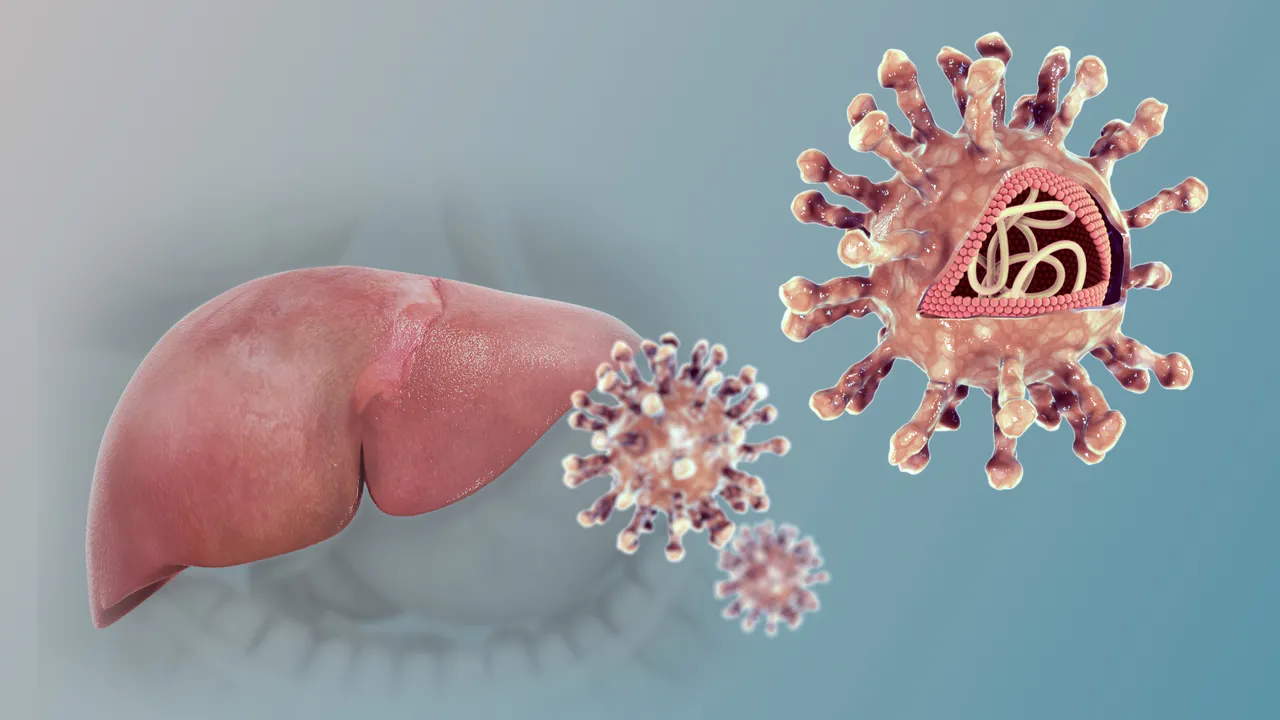Anti-Hepatitis drugs, just as their name implies are used to treat hepatitis but it is important to know that anti-hepatitis drugs work for Hepatitis-B virus and Hepatitis-C virus. Let's launch into it without wasting any further moments.
Starting with Hepatitis-B, it attacks the hepatic tissue causing inflammation, and damage to the tissue which could lead to carcinoma of the tissue such as hepatocellular carcinoma. It attacks the hepatocytes, and it does that using a specific protein channel such as the Sodium Taurocholate Cotransporting Polypeptide (NTCP), which allows it entry into the cell where it begins to release its partial double DNA strand where it gets taken up into the cell nucleus where it begins to convert its partial stranded DNA into a circular double-stranded DNA also known as TTV virus DNA. In the nucleus, the circular double-stranded DNA begins to replicate, and also begins transcription where RNAs messenger RNA and pregenomic RNA) are made. The mRNA utilizes the host cell ribosome to create structural proteins and functional proteins for the virus's makeup. The proteins get taken up to the Golgi apparatus so as to help create the protein for the new viruses. while the mRNA has been used, the pregenome RNA also needs to be used and to do that, it needs to be converted back to DNA, and to do so, the reverse transcriptase enzyme is used. The pregenome RNA is converted into partially double-stranded DNA. The partially double-stranded DNA, along with the proteins in the Golgi apparatus is used to create new Viruses. The Pregenome RNA needed to be converted to partially double-stranded DNA because the virus is a DNA virus. From the Golgi apparatus, the virus fuses to the cell membrane where the virus is exocytosed, to be able to damage other hepatocytes. ,,,.

In other for Hepatitis B to infect other hepatocytes, it needs to replicate and infect other hepatocytes but there are drugs that can stop or prevent certain activities from occurring in the cell of the hepatocytes, and one of these activities is the Reverse Transcriptase process which converts the pregenome RNA to partially double-stranded DNA. With Reverse Transcriptase inhibitors, there will not be the conversion of pregenomic RNA to make DNA, which will prevent new virus formation as DNA will not be encoded into the virus protein already available at the Golgi apparatus. NRTIs are nucleoside reverse transcriptase which when added to the template of the virus strand prevent further addition of nucleotides since the NRTIs don't have a hydroxyl group at their end which will allow for the addition of more nucleotides. These drugs include Lamivudine and Entecavir. Similar to NRTIs are NTRTIs which have the same mechanism of action but are nucleotides instead of nucleosides and they also prevent the conversion to DNA of the Hepatitis virus. NTRTIs drugs include Adefovir, and Tenofovir. Using the NTRTIs can lead to adverse effects such as Fanconi syndrome which leads to the excretion of phosphate, glucose, and amino acids. This is a triad of phosphaturia, Glycosuria, and Aminoaciduria. ,,,.
With Interferon Alpha, a cytokine produced by the innate immune system in response to exposure to viral infections which travels to nearby body cells binding to the cells and allowing for the production of certain proteins which increases antiviral peptides, which inhibits the virus from synthesizing protein, prevent RNA to DNA conversion and increase the expression of MHC-1 complex. The interferons allow for the killing of an infected cell by the virus. Patients who use Interferon Alpha can suffer side effects such as teratogenic effects with pregnancy, anemia, thrombocytopenia, and pancytopenia. ,,.
While we have discussed Hepatitis B, the next antiviral drugs I will be looking at are drugs that work against or inhibit Hepatitis C. Hepatitic C viruses destroy the liver cells which could lead to inflammation and Hepatocellular carcinoma (HCC). While the Hepatitis B viruses are DNA viruses, the Hepatitis C viruses are RNA viruses. The virus undergoes endocytosis to get into the host cell. In the cytoplasm of the cell, the virus uncoats and then releases its RNA into the host cell's cytoplasm. The RNA moves straight to the Ribosomes of the rough endoplasmic reticulum where it binds with the ribosome. They are then translated into polyproteins (such as NS3, NS4A, NS5A, and NS5B).. The polyprotein is broken down by protease into structural and functional proteins which are needed for the replication and function of a new virus. With drugs that can inhibit these activities, then there will be an inability to replicate. Having drugs that target the NS3/NS4A protease also the polyprotein NS5A and NS5B will help prevent the replication of Hepatitis C. Using protease Inbitor drugs Simeprevir, Paritaprevir, and Glecaprevir will inhibit the cleaving of the NS3 and NS4A which will prevent the formation of protein structures. Using NS5A Inhibitors such as Ledipasvir,Velpatasvir,Daclatasvir. Also the NS5B accesses the RNA-dependent RNA-polymerase preventing the formation of HCV RNA which will prevent the formation of the virus. Drugs such as Sofosbuvir, and Dasabuvir. These drugs can be combined so as to perform their functions properly. There can be a combination of NS5A inhibitor and NS5B inhibitor, a combination of NS5B inhibitor and NS3/NS4A protease inhibitor, and so on, depending on the genotypes of the virus. ,,,,..
With these inhibitor drugs, it will be impossible for both Hepatitis B and Hepatitis C viruses. The major side effects of hepatitis C drugs are they teratogenic, and shouldn't be given to pregnant women, can lead to Anemia. In my next post, I will be creating a post on Herpes Antiviral Drugs.
